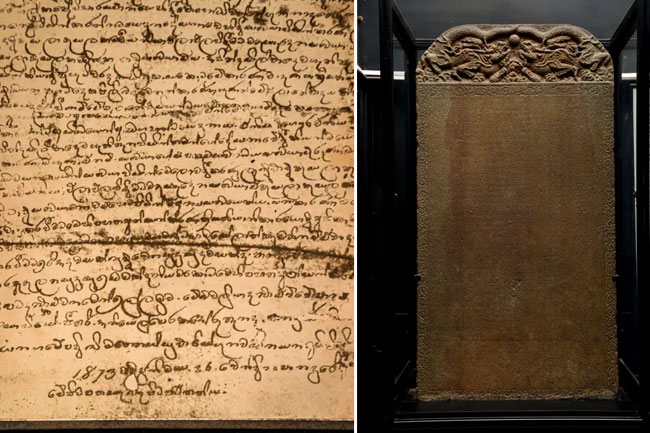Sri Lanka’s Trilingual Inscription (Tribhasha Sellipiya) and a set of documents related to the historic Pānadurā Vādaya (The Great Debate of Panadura) of 1873 have been officially inscribed in UNESCO’s Memory of the World Register, the United Nations Educational, Scientific and Cultural Organization announced on Thursday.
The Trilingual Inscription, a joint submission by Sri Lanka and China, is a stone tablet bearing inscriptions in Chinese, Persian and Tamil, paying tribute to Buddha, God Vishnu, and Allah. Dating back to 15 February 1409, it was installed in Sri Lanka by Chinese Admiral Zheng He during his third voyage and is currently preserved at the Colombo National Museum, with a replica on display at the Galle National Museum.
According to UNESCO, this is the only known trilingual inscription featuring these three languages, representing distinct regions and cultures. The tablet was originally inscribed in the Treasure Boat Shipyard Park in Nanjing and later transported to Sri Lanka. It refers to offerings made to a sacred mountain shrine.
Alongside the inscription, UNESCO also recognised four documents associated with the Panadura Debate, housed at the Rankot Viharaya Buddhist temple in Panadura. These include correspondence between Christian and Buddhist leaders that laid the groundwork for an open dialogue on religious doctrine, as well as a full transcription of the debate itself, spanning 27 and a half handwritten pages.
Held amid religious tensions in 19th-century Ceylon, the Panadura Debate helped foster reconciliation between Buddhist and Christian communities. Its English translation, which circulated in Europe and the US, contributed to a broader recognition of Buddhism as a sophisticated and advanced religion.
Audrey Azoulay, UNESCO’s Director-General, said, “Documentary heritage is an essential yet fragile element of the Memory of the World. This is why UNESCO invests in safeguarding it, shares best practices, and maintains this register that records the broadest threads of human history.”
The Memory of the World Register, established in 1992, now includes 570 documentary collections from across the globe—ranging from scientific milestones to women’s contributions in history and developments in international diplomacy. UNESCO continues to support regional registers and National Memory of the World Committees in over 100 countries to ensure the preservation and accessibility of humanity’s fragile documentary legacy.






